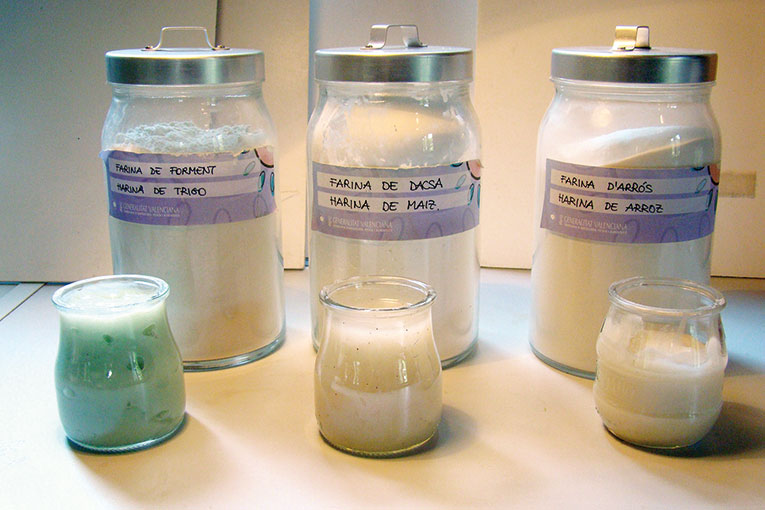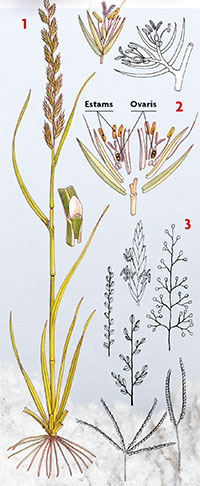
 |
||
|
For this collaboration in the fall issue, we want to propose an activity to provide us with materials for the handicrafts made at school. That is why we recover a recipe to make glue with flour that has been known and used for a long time and is very simple to elaborate. Producing the glue used in school work and handicrafts is yet another way of reducing costs and making accessories and necessary tools for the school activities in an entertaining way. In addition, it is a pretext to enter the world of cereals, a group of plants that get their name from the goddess Ceres and represent the most efficient plant group; they are a sustainable and austere form of life. Cereals are plants that have almost no leaves, nor a woody texture, live around the world and can colonise the most inhospitable places, such as landscapes burned by a fire or extensive dry lands. The most well-known are those used for basic nutrition, such as rice, wheat, maize, oats, rye, sorghum, millet, spelt or barley. They are very valued for their nutritional qualities, since the seed, although very small, provides the essential nutrients for a basic diet. Cereals provide the vegetal sugar par excellence, starch, which animals lack. Starch is made up of two types of molecules, amylose – which are units of glucose that form linear chains – and amylopectin – the chains of glucose units from which they stem. The characteristic of these two molecules, one long and one smaller, is that they form a compound when connecting with a water molecule. This is the basis of our product, glue. Glue is an adhesive material used for putting up posters or painted wallpaper and to do craftwork with paper and cardboard or papier-mâché. It is the perfect solution when you have to glue a lot of things and you do not want to spend money on synthetic glues. Although many know that glue is basically white flour of any cereal, the exact way of making it is an art that few people today master. |
 Eugeni Sierra / Enciclopèdia Catalana Eugeni Sierra / Enciclopèdia CatalanaCereals managed to colonise the most inhospitable spaces of the planet. In the illustration, we can observe the main parts that make up these plants: 1) A little ear. 2) Structure of the flower. 3) Several types of flower or inflorescences. |
|
 |
||
 In 1990, Washington University measured the adhesive power of different glues. On the table, adherence (in kg) of different glues: rice paste, wheat paste, undiluted white glue and white glue diluted with water 1:1. In 1990, Washington University measured the adhesive power of different glues. On the table, adherence (in kg) of different glues: rice paste, wheat paste, undiluted white glue and white glue diluted with water 1:1. |
||
|
ACTIVITY: HOME-MADE GLUE WITH FLOUR Glue with flour, also known as paste, has been used for a long time, and it is also very easy to make. We are going to show you the recipe and give you some advice on how to preserve this glue for a longer time. The best option is to make it the day before and prepare only as much as necessary for the activity, since it will last three days at most. It is a light adhesive, so children can use it. Method — Prepare a cup (¼ litres) of water and heat it. Some tips — You can bain-marie a pot to prevent the mixture from sticking to the bottom. Mª José Carrau, Olga Ibáñez i Pepa Rey. Teaching Team of the Botanical Garden of the University of Valencia. |
«Making glue with flour is a pretext to enter the world of cereals, which are the most ustainable and austere form of life» |
|





